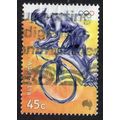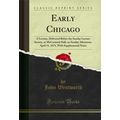Friedrich, Caspar David - City at Moonrise 1817 - German art postcard
- Condition : Used
- Dispatch : 2 Days
- Brand : None
- ID# : 73382829
- Quantity : 1 item
- Views : 497
- Location : United Kingdom

- Seller : justthebook (+1703)
- Barcode : None
- Start : Sat 01 Sep 2012 21:35:31 (EDT)
- Close : Run Until Sold
- Remain : Run Until Sold
Checks/Cheques
 for 1 item(s) edit
for 1 item(s) edit
Shipping Calculator
More Listings from This Seller view all
Seller's Description
- Art Postcard
- Work of art title: City at Moonrise, c.1917 / Stadt bei Mondaufgang
- Artist (if known): Caspar David Friedrich (1774-1840)
- Media or other details: painting
- Publisher / Gallery: Museum Stiftung Oskar Reinhart, Winterthur, Switzerland, c.1980s
- Postally used: no
- Stamp & postmark details (if relevant): na
- Size: modern
- Notes & condition details:
NOTES:A240
Size: 'Modern' is usually around 6in x 4in / 'Old Standard' is usually around 5 1/2in x 3 1/2in. Larger sizes mentioned, but if you need to know the exact size please ask.
All postcards are not totally new and are pre-owned. It's inevitable that older cards may show signs of ageing and use, particularly sent through the post. Any faults other than normal ageing are noted.
Stock No.: A240
------------------------------------------------
Postage & Packing:
UK (incl. IOM, CI & BFPO): 99p
Europe: GBP 1.60
Rest of world (inc. USA etc): GBP 2.75
No additional charges for more than one postcard. You can buy as many postcards from me as you like and you will just pay the fee above once. (If buying postcards with other things such as books, please contact or wait for invoice before paying).
Payment Methods:
UK - PayPal, Cheque (from UK bank) or postal order
Outside UK: PayPal only please (unless otherwise indicated). NO non-UK currency checks or money orders (sorry).
NOTE: All postcards are sent in brand new stiffened envelopes which I have bought for the task. These are specially made to protect postcards and you may be able to re-use them. In addition there are other costs to sending so the above charge is not just for the stamp!
----------------------------------------------
Text from the free encyclopedia WIKIPEDIA may appear below to give a little background information:
*************
Caspar David Friedrich (September 5, 1774 � May 7, 1840) was a 19th-century German Romantic landscape painter, generally considered the most important German artist of his generation.[2] He is best known for his mid-period allegorical landscapes which typically feature contemplative figures silhouetted against night skies, morning mists, barren trees or Gothic ruins. His primary interest as an artist was the contemplation of nature, and his often symbolic and anti-classical work seeks to convey a subjective, emotional response to the natural world. Friedrich's paintings characteristically set a human presence in diminished perspective amid expansive landscapes, reducing the figures to a scale that, according to the art historian Christopher John Murray, directs ""the viewer's gaze towards their metaphysical dimension"".[3]
Friedrich was born in the Swedish Pomeranian town of Greifswald, where he began his studies in art as a youth. He studied in Copenhagen until 1798, before settling in Dresden. He came of age during a period when, across Europe, a growing disillusionment with materialistic society was giving rise to a new appreciation of spirituality. This shift in ideals was often expressed through a reevaluation of the natural world, as artists such as Friedrich, J.M.W. Turner (1775�1851) and John Constable (1776�1837) sought to depict nature as a ""divine creation, to be set against the artifice of human civilization"".[4]
Friedrich�s work brought him renown early in his career, and contemporaries such as the French sculptor David d'Angers (1788�1856) spoke of him as a man who had discovered ""the tragedy of landscape"".[5] Nevertheless, his work fell from favour during his later years, and he died in obscurity, and in the words of the art historian Philip Miller, ""half mad"".[6] As Germany moved towards modernisation in the late 19th century, a new sense of urgency characterised its art, and Friedrich�s contemplative depictions of stillness came to be seen as the products of a bygone age. The early 20th century brought a renewed appreciation of his work, beginning in 1906 with an exhibition of thirty-two of his paintings and sculptures in Berlin. By the 1920s his paintings had been discovered by the Expressionists, and in the 1930s and early 1940s Surrealists and Existentialists frequently drew ideas from his work. The rise of Nazism in the early 1930s again saw a resurgence in Friedrich's popularity, but this was followed by a sharp decline as his paintings were, by association with the Nazi movement, misinterpreted as having a nationalistic aspect.[7] It was not until the late 1970s that Friedrich regained his reputation as an icon of the German Romantic movement and a painter of international importance.
...
The visualisation and portrayal of landscape in an entirely new manner was Friedrich's key innovation. He sought not just to explore the blissful enjoyment of a beautiful view, as in the classic conception, but rather to examine an instant of sublimity, a reunion with the spiritual self through the contemplation of nature. Friedrich was instrumental in transforming landscape in art from a backdrop subordinated to human drama to a self-contained emotive subject.[47] Friedrich's paintings commonly employed the R�ckenfigur�a person seen from behind, contemplating the view. The viewer is encouraged to place himself in the position of the R�ckenfigur, by which means he experiences the sublime potential of nature, understanding that the scene is as perceived and idealised by a human.[48] Friedrich created the notion of a landscape full of romantic feeling�die romantische Stimmungslandschaft.[49] His art details a wide range of geographical features, such as rock coasts, forests, and mountain scenes. He often used the landscape to express religious themes. During his time, most of the best-known paintings were viewed as expressions of a religious mysticism.[50]
Friedrich said, ""The artist should paint not only what he sees before him, but also what he sees within him. If, however, he sees nothing within him, then he should also refrain from painting that which he sees before him. Otherwise, his pictures will be like those folding screens behind which one expects to find only the sick or the dead.""[52] Expansive skies, storms, mist, forests, ruins and crosses bearing witness to the presence of God are frequent elements in Friedrich's landscapes. Though death finds symbolic expression in boats that move away from shore�a Charon-like motif�and in the poplar tree, it is referenced more directly in paintings like The Abbey in the Oakwood (1808�10), in which monks carry a coffin past an open grave, toward a cross, and through the portal of a church in ruins.
He was one of the first artists to portray winter landscapes in which the land is rendered as stark and dead. Friedrich's winter scenes are solemn and still�according to the art historian Hermann Beenken, Friedrich painted winter scenes in which ""no man has yet set his foot. The theme of nearly all the older winter pictures had been less winter itself than life in winter. In the 16th and 17th centuries, it was thought impossible to leave out such motifs as the crowd of skaters, the wanderer... It was Friedrich who first felt the wholly detached and distinctive features of a natural life. Instead of many tones, he sought the one; and so, in his landscape, he subordinated the composite chord into one single basic note"".[49]
type=printed postcards
theme=artists signed
sub-theme=art
number of items=single
period=1945 - present
postage condition=unposted
Listing Information
| Listing Type | Gallery Listing |
| Listing ID# | 73382829 |
| Start Time | Sat 01 Sep 2012 21:35:31 (EDT) |
| Close Time | Run Until Sold |
| Starting Bid | Fixed Price (no bidding) |
| Item Condition | Used |
| Bids | 0 |
| Views | 497 |
| Dispatch Time | 2 Days |
| Quantity | 1 |
| Location | United Kingdom |
| Auto Extend | No |















